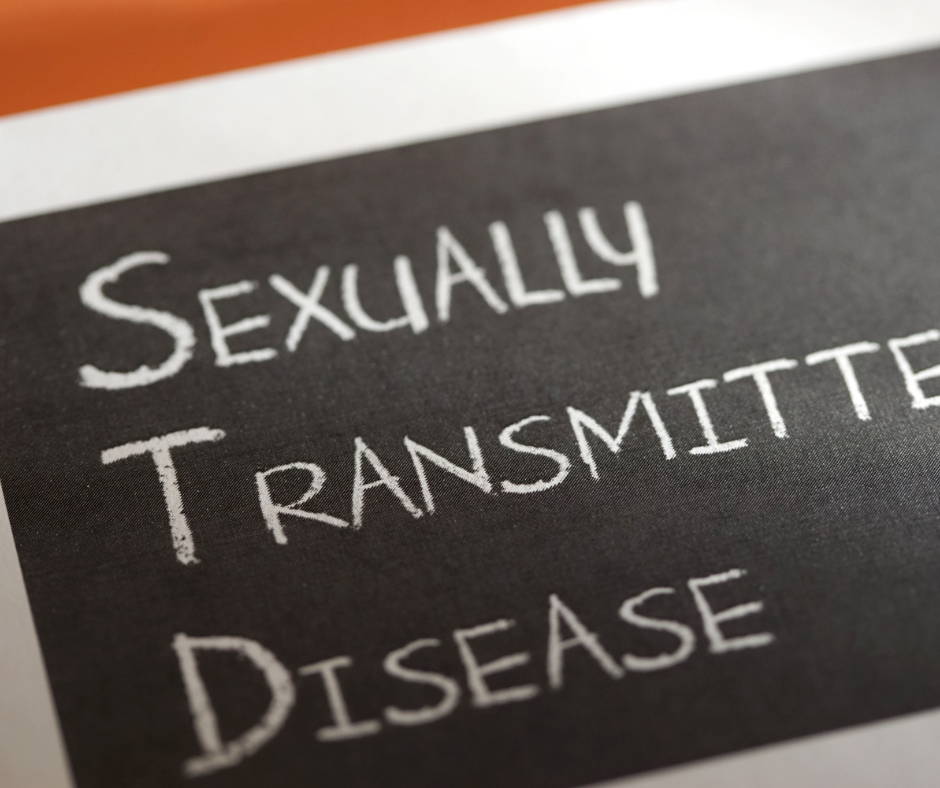STDs – sexually transmitted diseases. Just three little letters but man, they are no joke. In talking with most sexually active people, getting pregnant is their greatest concern. The reality is, statistically, they should be more worried about getting an STD.

According to the CDC, in 2018, STD rates for adults in our country were 1 in 5. Even more alarming, for those ages 15-24, the rates were 1 in 2. Unfortunately, while we don’t yet have updated numbers in 2024, research is showing that the numbers continue to climb. What has been surprising to me is how little this gets talked about when it’s impacting SO many people. Literally millions! Not even all of our medical professionals are doing a great job of making sure those who are infected are well educated about their condition. April is STD awareness month, so in this blog we will share a brief overview (but not exhaustive) of what you need to know. And just a warning, for the sake of your optimal sexual health, we are not going to sugarcoat it. Ultimately, if you are sexually active, please come in and get tested and educated (we will talk more about that later). The more informed you are, the better your decisions will be. While we get that it’s an uncomfortable topic, we want you to know you can ask your questions here. This is a judgment-free and embarrassment-free zone!
Let’s define our terms: Sexual risk REDUCTION, and Sexual risk AVOIDANCE. Reduction means you reduce your risk (for either getting pregnant or contracting an STD – but for this blog’s purpose we will focus on STDs), but you are still susceptible. For example, condom use can reduce your exposure to STDs but it does NOT eliminate it 100%. For one, for condoms to work properly, you must follow the instructions exactly (have you seen all that!!?!) Second, some STDs are spread through contact with bodily fluids, while others are spread through skin-to-skin contact. A condom simply does not cover enough area to eliminate the risk. And condoms can also break. Unfortunately, people assume that because they are using a condom, they have covered their bases, so to speak, in protecting their sexual health. But that simply is just not true. You may have reduced your risk, but you cannot say you have eliminated it or claim to be STD-free simply because you have always used a condom during sex. Now, sexual risk avoidance, means that you eliminate your risk. How do you do that? By only being with one person and staying in a totally monogamous relationship like marriage. If you haven’t done that, we would be happy to talk with you about the steps you would need to take to start over.
Ladies, we are more prone to STDs. That may seem unfair, but it is what it is – and that’s why we REALLY have to know these things and take care to protect our sexual health. So why are we more prone? We have an ‘open’ reproductive system, and males have a ‘closed’ system. While the beauty of our system allows us to conceive, it also allows us to receive STDs easier and experience more damage to our reproductive system, which is why we must take it on ourselves to protect our sexual health.
Ladies, your STD risk level is associated with your number of sexual partners. The higher the number, the greater the risk of exposure. That includes his numbers too. The higher his numbers are, the greater risk you are at. But the reality is, it only takes one time with someone who is infected to become infected. And the bad news gets even worse: most infected people have no idea they are infected. There are no alarms that go off, no flashing lights alerting you to it. Many contract an STD and have no symptoms, and then pass it along unknowingly. Many people don’t get tested regularly. Which is partly why the STD rates are so high.
There are 3 types of STDs – bacterial, viral and parasitic. Bacterial infections can be treated with an antibiotic (if you know you have it) and viruses either have to run their course or are something you live with for life and have to manage the symptoms or outbreaks of. Chlamydia and HPV are the most prevalent STDs. Tune in next month to find out the shocking things most women don’t but should know about them. It could spare you a lot of heartache and maybe even save your life!



